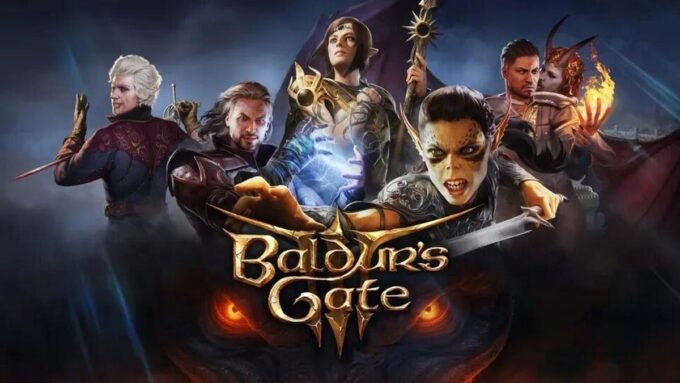Video games are no longer built solely with code, creativity, and caffeine. Artificial intelligence (AI) is reshaping how developers design, test, and refine gameplay experiences. What started as simple enemy patterns has matured into systems that learn, adapt, and sometimes even surprise the developers who made them.
AI is now helping build smarter games that feel more alive—games that react, evolve, and understand the player. But this transformation isn’t magic. It’s the result of thoughtful tools and new workflows that balance automation with creative control.
Speed Meets Scale: Procedural Design and Asset Generation

Source: catalonia.com
One of the first doors AI unlocked in game development was scale. Developers now use procedural generation to auto-create levels, terrain, textures, and even soundscapes. These systems aren’t random—they follow rules and adapt based on style guides and input parameters.
Instead of manually crafting every detail, creators can now generate environments in hours, leaving more time to focus on storytelling or gameplay logic.
Here’s how AI accelerates this creative lift:
- Faster world-building: Landscapes, cities, and dungeons can be generated with style presets, reducing repetitive work.
- Automated texturing and lighting: AI mimics photorealism with style transfer, helping smaller studios achieve AAA-level polish.
- Generative music and sound: Background audio adapts to mood and pacing, often with AI tweaking pitch and layering dynamically.
The result? Richer environments at a fraction of the time and cost—without sacrificing character.
When NPCs Get Smarter

Source: profspeak.com
Non-player characters (NPCs) used to feel like cardboard cutouts. Today, they’re becoming personalities.
AI enables NPCs that respond to context. They change their tactics, moods, or speech based on your actions. Some can even “remember” interactions and shift tone over time.
This leap in interactivity does more than add realism. It deepens immersion.
You’re not just playing in a story—you’re part of its evolution.
Think about a stealth game where guards learn your usual hiding spots. Or a mystery game where a suspect gets nervous if you’ve interrogated their friends. That’s not just scripting. That’s AI weaving tension through response.
Real-Time Adjustments: Difficulty That Learns
Every player is different. Some rush through levels. Others study every corner. AI now helps tailor the challenge curve without forcing the player to manually toggle settings.
Here’s what that looks like in action:
- Adaptive enemy behavior: AI ramps up aggression or flanks if the player gets too comfortable.
- Smart resource drops: Players low on health might find a medkit sooner—but only if the AI predicts genuine struggle.
- Session-by-session tuning: AI logs player reactions and performance, subtly tweaking enemy density or puzzle logic.
This silent balancing act keeps tension intact—enough challenge to feel rewarding, without punishing newer players or boring veterans.
Visual Realism Powered by AI

Source: computerscience.org
Visual expectations are rising across every genre. Players want immersive lighting, lifelike textures, and expressive animation.
AI helps meet those expectations without crushing hardware.
- Ray tracing and upscaling: AI calculates reflections and lighting dynamically, making even mid-range PCs look like powerhouses.
- Facial animation: Generative AI allows characters to express emotion naturally—even syncing lips with procedurally generated dialogue.
- Art consistency: Teams can train models to auto-style environments or characters based on pre-set visual themes.
These improvements often happen in the background, but they create a visual language that players instantly feel—even if they can’t explain why.
Smarter Testing, Less Crunch
Quality assurance used to rely on armies of testers. Now, AI bots can test builds thousands of times across multiple scenarios—day, night, full inventory, half-health, etc.
This leads to earlier detection of game-breaking bugs, pathing issues, or exploit loops.
What makes AI useful here:
- Pattern spotting: AI flags areas where players quit early or replay often, indicating either frustration or fun.
- Regression detection: With every update, AI compares behaviors to ensure new bugs weren’t introduced accidentally.
- Automation of tedious testing: From checking door triggers to measuring load times, AI handles repetitive stress checks.
Developers still need human playtesters. But now, AI handles the grind, allowing people to focus on feel and fun.
A Look at Casual Game Mechanics

Even the simplest games benefit from smarter backend logic. Take a classic Plinko Game—a fan-favorite casual title where balls fall through pegs toward scoring slots.
By adding a lightweight AI engine, developers can:
- Adjust peg patterns based on user reaction.
- Modify ball physics slightly per round to introduce subtle randomness.
- Track player patterns to introduce score variability or bonus rounds.
These tweaks keep the game engaging and fair, making sure outcomes feel earned, not rigged. You can see examples of this in platforms like Royal Casino, where traditional gameplay gets new life with AI-backed design.
Developers and AI Coding Assistants
It’s not just the games that are getting smarter. So are the tools developers use to build them.
AI-powered coding assistants now do more than autocomplete lines. They:
- Suggest full logic blocks for common game systems.
- Predict likely bugs based on past code errors.
- Propose optimization ideas before human review.
This means fewer hours spent chasing null errors and more time refining mechanics. The best part? Even small teams now ship features that once required massive crews.
How Developers Are Using AI Wisely

Source: techradar.com
There’s excitement—and caution. Developers are increasingly aware that AI should elevate creativity, not erase it. Here’s how smart studios are approaching the shift:
- Creative control stays human: AI drafts, humans refine. That’s the golden rule.
- Transparency with players: Many games now disclose where AI is used—in text, art, or logic.
- Bias checks and QA: AI outputs are reviewed carefully to avoid stereotype loops or unpredictable errors.
- Tool diversity: Teams don’t rely on one system—they mix open-source, cloud tools, and in-house models.
It’s not about shortcuts. It’s about focusing time where it matters: making games that surprise, challenge, and delight.
AI as a Collaborator, Not a Replacement
At its best, AI is like a co-pilot—quietly managing the grind so that the creative vision can shine through. Developers who embrace it wisely gain speed, flexibility, and even a bit of unpredictability, which, in games, is often exactly what makes them memorable.
The smarter games of tomorrow won’t just have better graphics or bigger maps. They’ll listen. They’ll react. They’ll feel personal.
That’s not a gimmick. That’s thoughtful design, amplified by the right kind of intelligence.



